Pictures from the video "Interlocking 101"
A 16 screen interlock demonstration
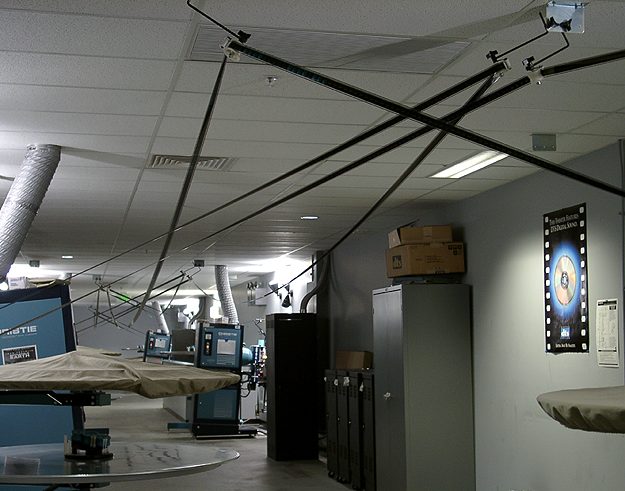
For those who have not yet seen the video "Interlocking 101", it can be downloaded from the "videos" section of this web site. The video features a complete and unedited walk-through of this entire 16 screen interlock in action.
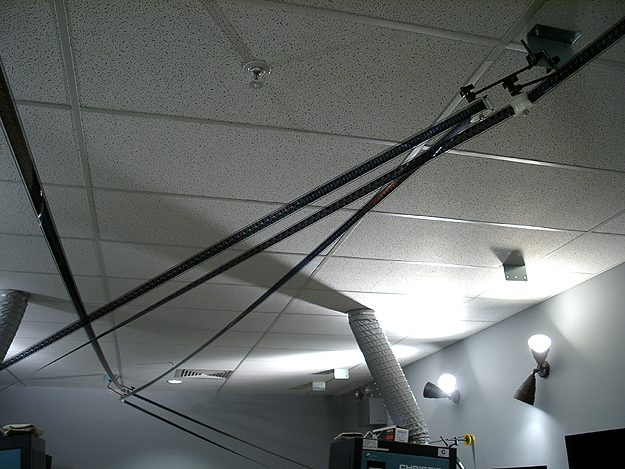
This complex has 16 projectors in 4 separate booths and NO functioning interlock circuitry.
All 16 projectors were started relying solely upon the accuracy of the timers.
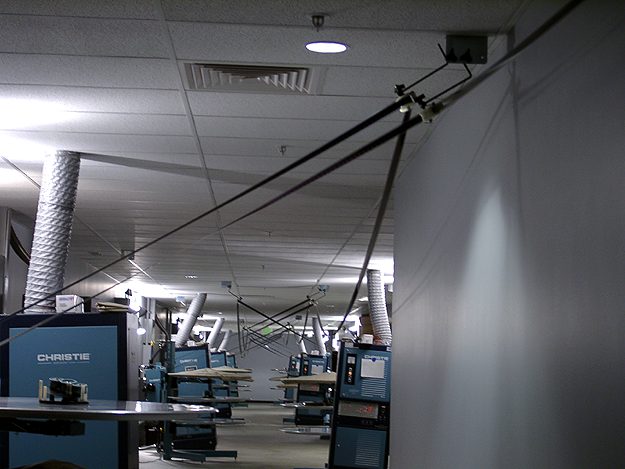
Here is a shot of the north booth, housing projectors #2-8.
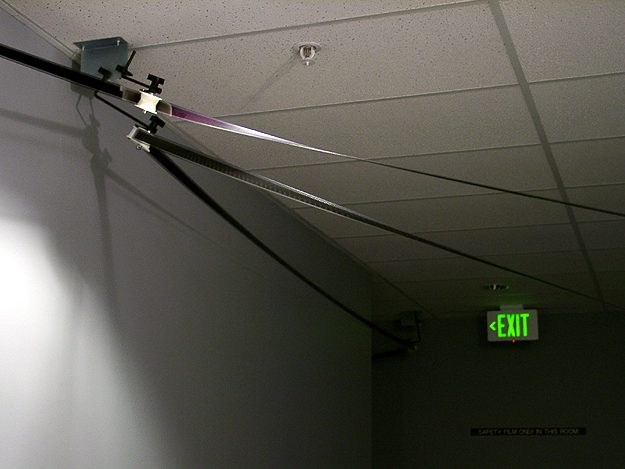
Around the corner...
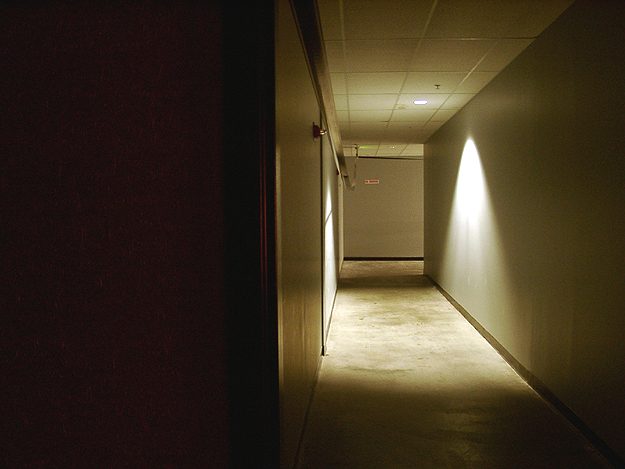
...and down this hall the film must travel to a temporary...
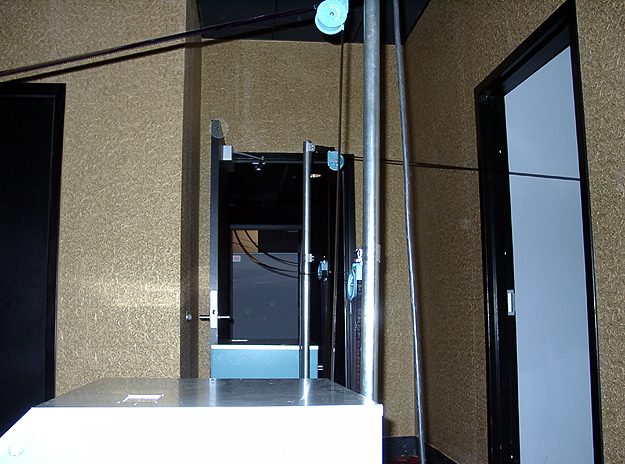
...make up table, where the film is turned 90 degrees and fed into...
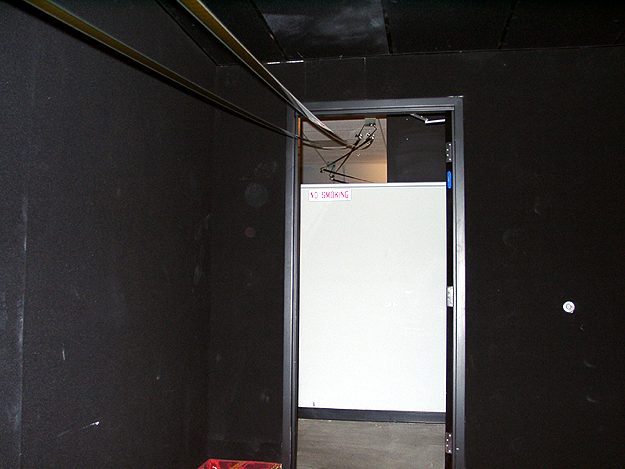
...the #1 booth.
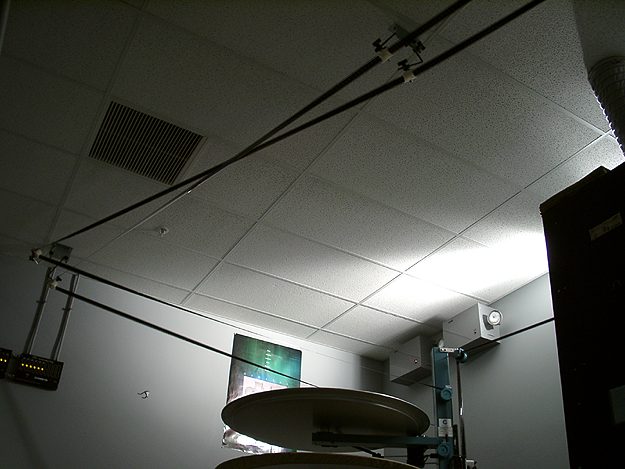
This booth houses one of the big auditoriums.
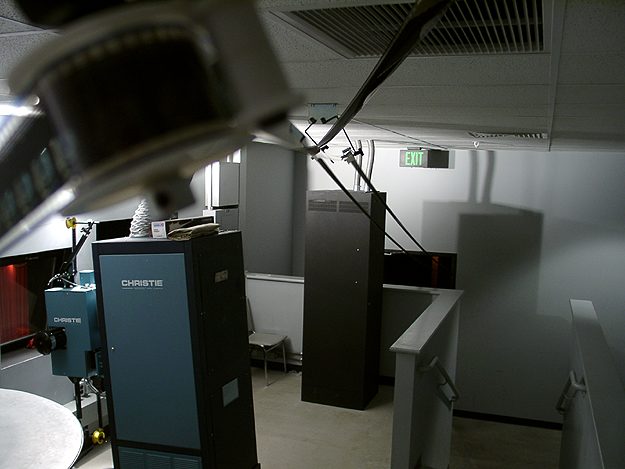
Clearance into the booth is critical as the film must dodge the sound rack, half wall and the top of the door frame.
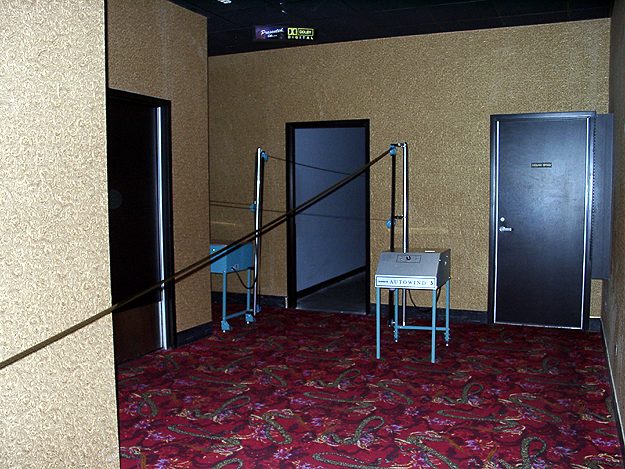
From #1 the film exits back out into the upstairs ADA compliant lobby area and must travel...
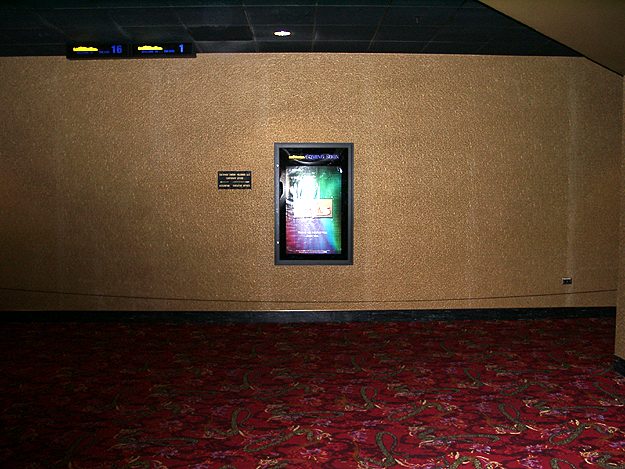
80 FEET until it reaches...
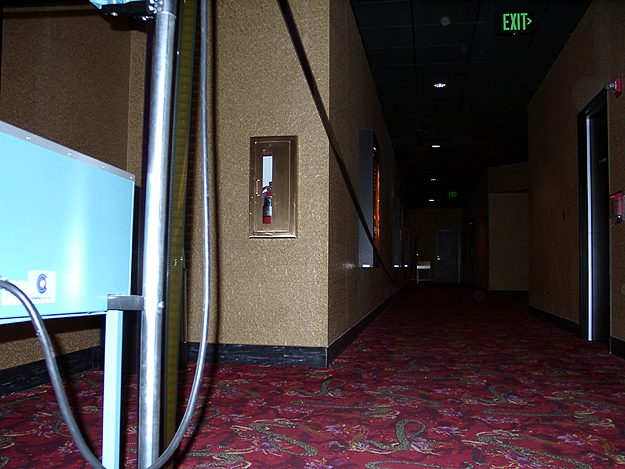
...another make up table...
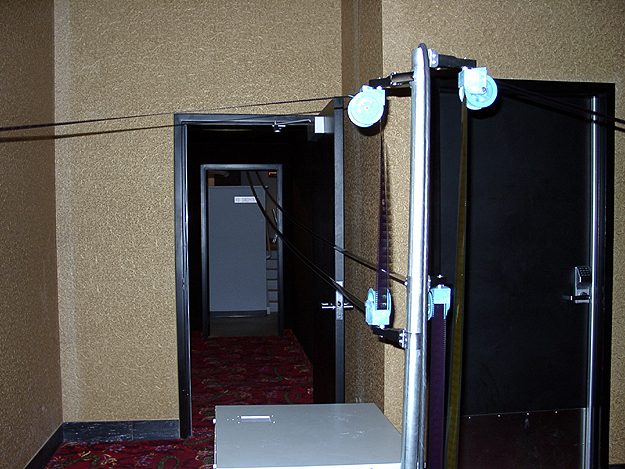
...which turns the film 90 degrees yet again and feeds into the #16 booth.
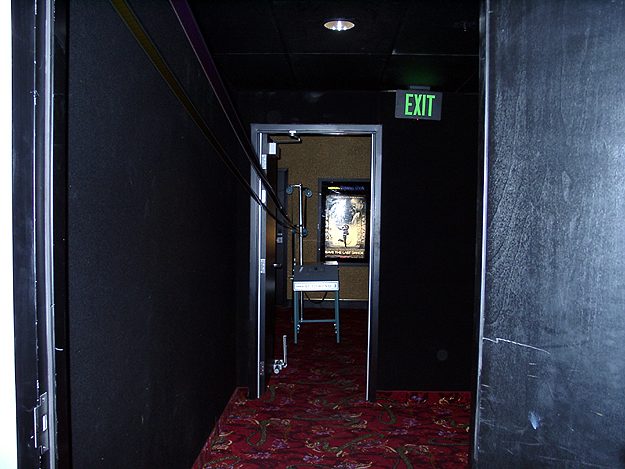
The double doors must be kept propped open.
Certain disaster would result from this polyester film stock should a door close!
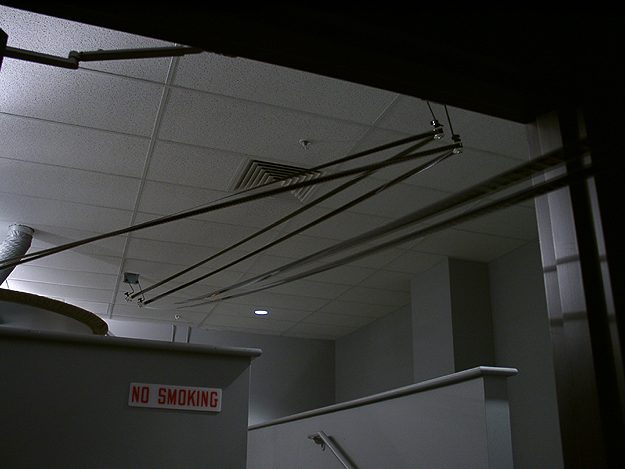
#16 is the tricky booth as there is no direct way to feed the film into the projector. Threading requires a projectionist with a death wish to stand on the edge of the ledge and reach outward to put the film into the rollers on the right. Although it appears from this picture angle that those two rollers are directly above the half wall, they are not. Again the clearance into and out of this booth is critical, especially in regards to the door frame.
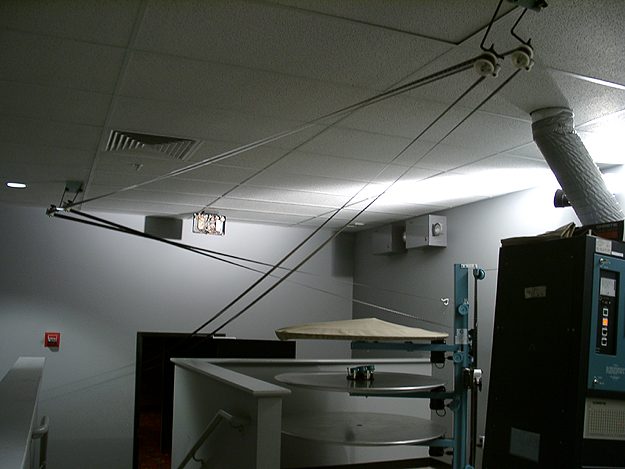
Four rollers must be utilized in order to turn the film the proper angles in this cramped booth.
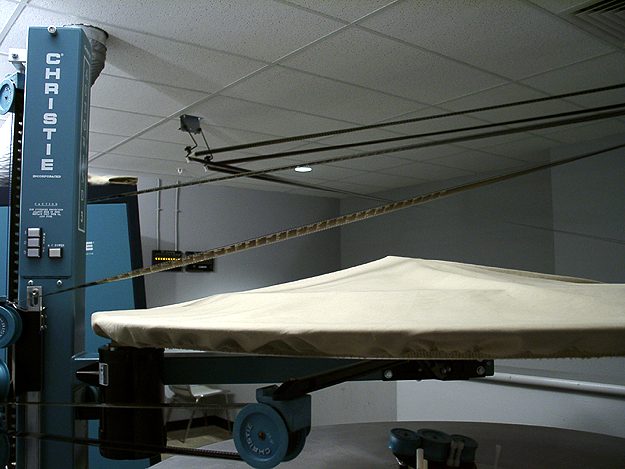
As with this entire setup, the takeup arms are being utilized as a tensioning device.
This only provides 2 seconds MAXIMUM error time between start timers!
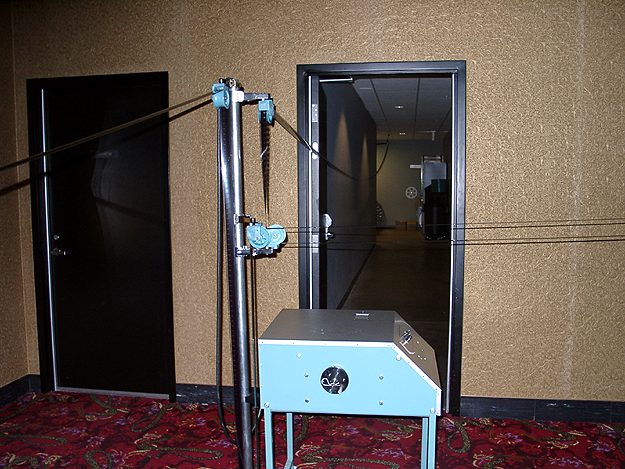 \
\
From #16 the film travels through the same make up table as before and is directed into the south booth.
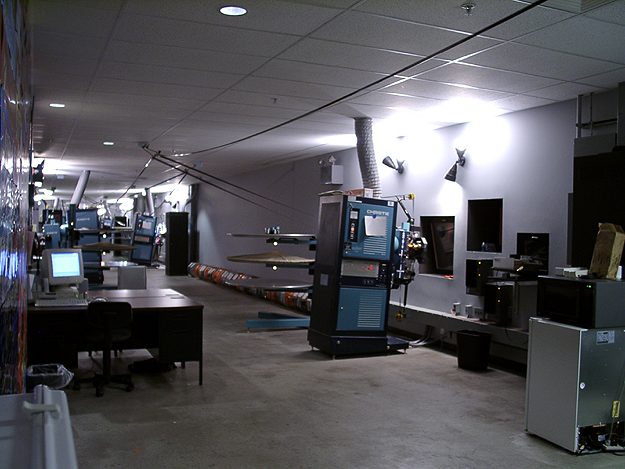
Once in the south booth, there are 7 more projectors to run through.
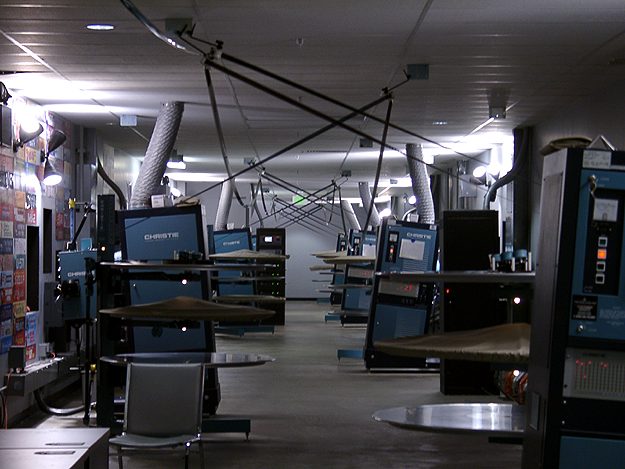
The pattern here is virtually identical to the north booth, as was seen earlier.
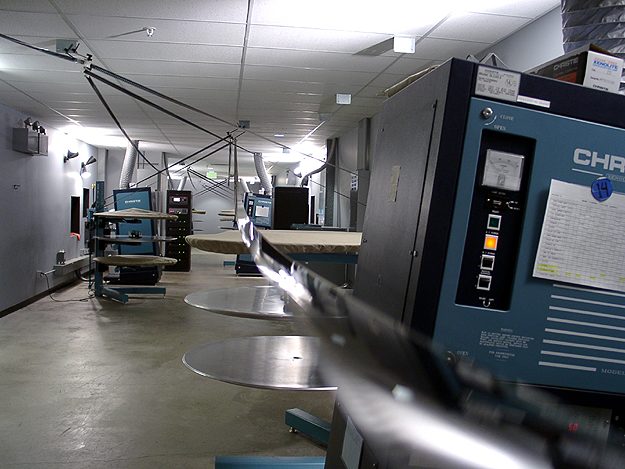
As seen in this picture, the film hangs very low between large auditoriums.
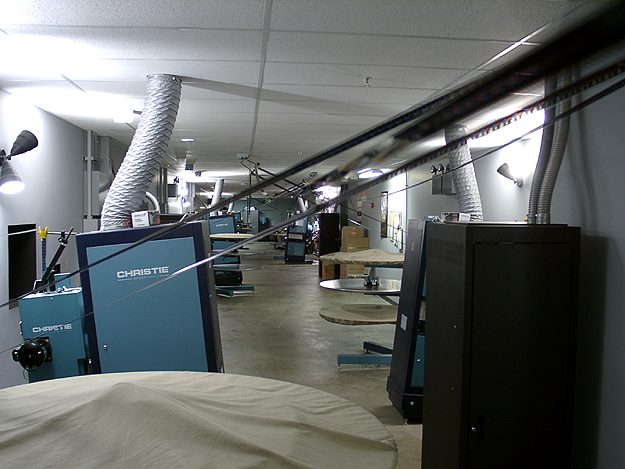
Threading gets critical in some points. Here is a shot demonstrating how #13 must be threaded over the film joining #11 and 10 for supply and under this film for takeup.
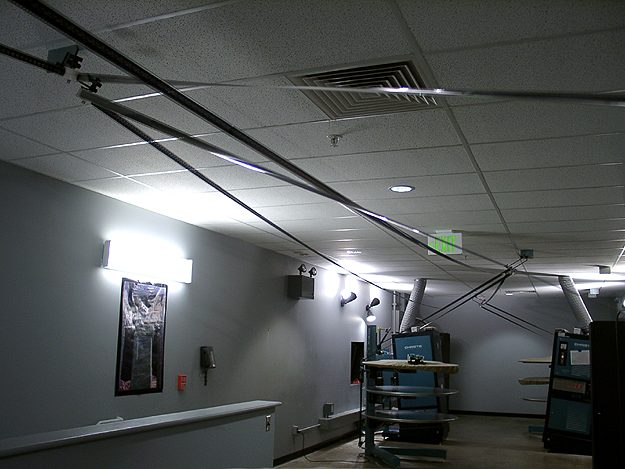
Threading this interlock required 3 different pieces of leader. Projectors #8-2 were threaded with one stretch of leader, #2, 1, 16 and 15 were threaded with another stretch of leader, and #15-9 were threaded with a third stretch of leader. Upon completion of the 3 stages of threading, the film was spliced together to form one continuous interlock. Threading the film in this manner was absolutely necessary, as with all of the twists and turns the film had to go through, it was impossible to pull the film through more than 7 projectors worth of rollers at a time. All totaled, the film ran over 200 rollers!
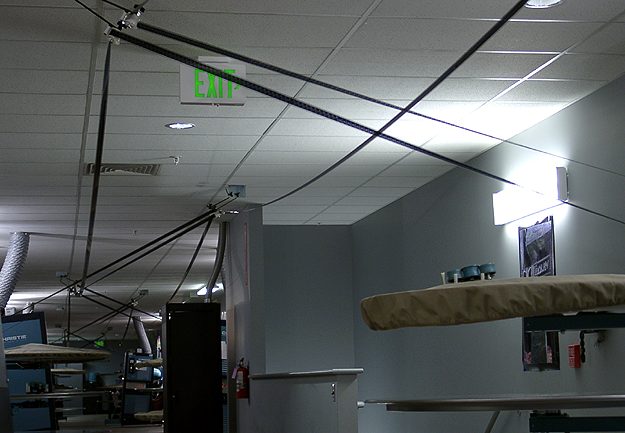
There was a total of over 2000 feet of threading leader required to get things ready to roll and the time distance from the first projector to the last projector was just over 20 minutes!
Interlock set up and performed by Brad Miller at the
Colorado Cinema Holdings L.L.C. Chinese 16 at Arapahoe Crossings theater in December of 2000.
Dedicated to Steve Guttag.